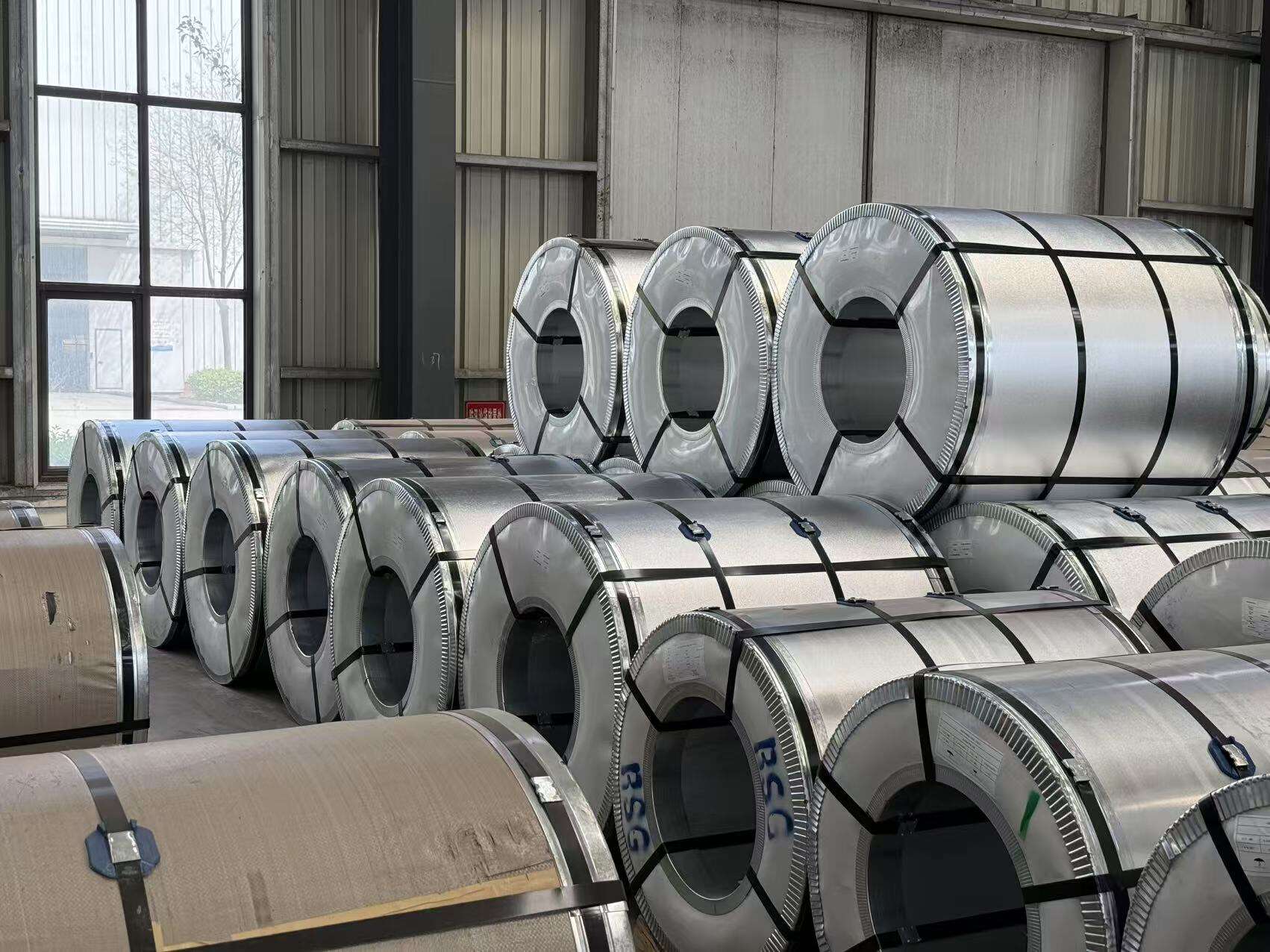Exceptional Corrosion Resistance in Outdoor Environments
How the zinc coating acts as a protective barrier against moisture and oxygen
The zinc coating on galvanized steel creates a protective layer that stops moisture and oxygen from getting to the metal surface these are basically what causes rust to form. When made using the hot dip method, the zinc actually fuses with the steel at a molecular level, forming a tough coating around 65 to 85 micrometers thick. This kind of protection lasts for many years even when exposed to harsh weather conditions. People who work with steel know this works particularly well in areas with high humidity. Studies show that regular steel without this protection rots away about 18 times quicker than galvanized steel according to research published by Firoozi and colleagues back in 2025.
Rust resistance from zinc coating extends material longevity
Zinc works differently from regular paint or powder coatings because it actually gives up its own material before the steel underneath gets damaged, which helps maintain the structure's strength even if there are scratches. According to various weather exposure studies conducted over time, galvanized steel still has around 92 percent of its original coating intact after sitting outside for 25 years in normal climate zones. Painted steel doesn't fare so well though, typically losing most of its protection within the same timeframe with only about half remaining. The fact that zinc corrodes at such a slow rate means important structures can last way beyond 50 years. Think about those massive transmission towers holding up power lines across vast distances or the cables supporting bridges that carry thousands of vehicles daily. These aren't things we want failing anytime soon!
Performance in coastal and industrial areas with high salinity and pollutants
Along coastlines where saltwater is prevalent, zinc interacts with chloride ions to create stable zinc hydroxycarbonate compounds which help prevent surface flaking. Recent studies from the field of anti-corrosion tech show something pretty impressive too: galvanized coatings cut down corrosion rates by around 85% when exposed to environments containing more than 100 mg per cubic meter of chloride. For those working near industrial sites dealing with sulfur dioxide pollution, there's another benefit worth noting. The protective layer that forms naturally on zinc actually neutralizes acidic substances before they can cause damage. Without this protection, bare steel surfaces would start showing signs of pitting much sooner than expected.
Sacrificial anode protection prevents corrosion at cut or damaged edges
The zinc-iron alloy layers (Gamma, Delta, Zeta) create electrochemical conditions favoring zinc dissolution over steel oxidation. At cut edges or bolt holes—common corrosion points—this “self-healing” effect protects up to 2 mm beyond visible damage. Field data from 12,000 marine guardrails revealed 94% remained corrosion-free after 15 years despite installation-related abrasions.
Long-term durability: galvanized steel lasts up to 50 years in rural settings
Rural areas with low pollution levels often see annual corrosion rates dropping down to around 1 micrometer, which means most structures don't really need any recoating or special maintenance apart from basic checks now and then. Take agricultural silos across the American Midwest as an example many of these have stood strong for nearly half a century, showing only about 5% wear on their vertical surfaces over all that time. This kind of consistent performance makes them great candidates for infrastructure projects that need to last decades without constant intervention.
Proven Durability Under Harsh Weather Conditions
Resistance to UV exposure, rain, and extreme temperature fluctuations
Galvanized steel resists degradation under prolonged UV exposure due to zinc’s natural reflectivity. The bonded coating withstands continuous rainfall with minimal loss—just 0.02 mm/year in temperate climates—and endures thermal cycling from -40°C to +120°C without cracking or delamination, outperforming many coated metals.
Reliability in snow, ice, and high-heat environments
During freeze-thaw cycles, the intermetallic zinc-iron layers resist flaking common in painted systems. Arctic installations remain 98% corrosion-free after 15 winters, while desert applications show no thermal distortion below 400°C. With a thermal conductivity of 50 W/m·K, galvanized steel dissipates heat efficiently, reducing ice buildup compared to slower-cooling materials.
Case study: Galvanized utility poles enduring over 40 years in northern climates
A 2023 analysis of Manitoba Hydro’s network showed 92% of galvanized poles installed in 1982 still maintain full load capacity despite facing -53°C extremes and 2 meters of annual snowfall. Only 3% required minor repairs—78% fewer interventions than concrete alternatives over the same period.
Low Maintenance Needs and Operational Cost Savings
Minimal Upkeep Compared to Painted or Untreated Steel Structures
Galvanized steel eliminates the repainting and surface treatments required by other materials. While painted steel typically shows wear within 5–7 years (American Galvanizers Association 2023), galvanized coatings self-heal when damaged. This reduces maintenance interventions by 40–60% over 25 years, significantly lowering labor and operational costs in large-scale projects.
Reduced Inspection and Repair Costs Over the Lifecycle
Galvanized steel contributes to lower total cost of ownership by minimizing maintenance demands. Utility companies report $18–$22/sq.ft savings over 30 years versus carbon steel, driven by avoided expenses including:
- No corrosion-related replacements
- Elimination of protective coating reapplications
- Reduced downtime for repairs
These benefits are reinforced through optimized lifecycle performance rather than recurring upkeep.
Ideal for Remote or Hard-to-Access Outdoor Installations
Its durability makes galvanized steel ideal for cell towers, pipelines, and offshore rigs where access is limited. A 2022 solar farm analysis found galvanized mounting systems reduced annual upkeep costs by $740/acre (Ponemon 2023) compared to aluminum, proving especially valuable in mountainous or coastal regions with logistical constraints.
Cost-Effectiveness Over the Lifecycle of Outdoor Projects
Initial Investment vs. Long-Term Savings Analysis
Though galvanized steel carries a 15–20% higher upfront cost than uncoated steel, its long-term savings are substantial. A 2023 civil engineering study found it reduces maintenance costs by 60% over 25 years, primarily by eliminating repainting cycles (needed every 3–5 years for painted steel) and preventing early failure from rust.
High ROI in Construction, Infrastructure, and Renewable Energy Applications
Real-world examples confirm strong returns. The Minnesota Department of Transportation reported galvanized guardrails required zero maintenance over 28 years, while carbon steel equivalents needed seven repaints. In renewable energy, galvanized solar mounts retain 92% of their value after 30 years due to minimal repair needs.
Understanding the Paradox: Higher Upfront Cost, Lower Total Ownership Cost
The break-even point for galvanized steel typically occurs within 8–12 years. Post-industrial site analyses show total ownership costs are 34% lower over 50 years compared to alternatives. This advantage stems from:
- Elimination of post-installation protective coatings
- Sustained structural integrity through freeze-thaw and UV exposure
- No chemical treatments required to counter salt or pollutant corrosion
Common Outdoor Applications Showcasing Galvanized Steel Benefits
Use in Bridges, Guardrails, Transmission Towers, and Public Infrastructure
Galvanized steel has become a staple material for important infrastructure because it stands up well to harsh environmental conditions. Bridges built with this material can last many decades even when exposed to saltwater, while transmission towers handle both intense sunlight and extreme temperature changes without failing. Guardrails made from galvanized steel need about half as much maintenance after thirty years according to ASTM International data. Cities across the country depend on galvanized steel components in their water treatment facilities and drainage networks since these systems must keep running smoothly despite constant moisture and chemical exposure that would quickly corrode other materials.
Fencing, Wire Mesh, and Support Cables in Commercial and Residential Settings
Galvanized steel has become a go-to choice among developers for things like perimeter fencing and balcony railings because it combines solid strength with plenty of design options. The hot dip variety works particularly well as wire mesh in places where durability matters most, such as animal enclosures or industrial areas. It stands up against sagging and rust problems even after coming into contact with harsh substances like fertilizer runoff or acid rain. When it comes to structures that need long-term reliability, suspension bridges and zip line systems really benefit from this material's ability to resist fatigue. These components can handle constant stress without losing their load carrying capability, often lasting several decades before needing replacement.
Agricultural Uses: Barns, Silos, and Irrigation Systems
Galvanized steel lasts around 70% longer than painted alternatives when it comes to grain storage tanks according to field reports from many farms across the country. The zinc coating stops chemical reactions between metal surfaces and common fertilizers running through irrigation lines. Greenhouse structures made with galvanized materials handle high moisture levels well too, staying straight even when humidity climbs past 85%. For modern dairy operations, switching to galvanized roofs makes sense because they bounce back sunlight instead of absorbing it. This cuts down barn temperatures inside by roughly 15 degrees Fahrenheit as noted in that USDA study from last year. Cooler conditions mean happier cows and less need for extra cooling systems which saves money long term.
Growing Role in Solar Farm Mounts and Sustainable Urban Development
More and more solar installations are turning to galvanized steel for their mounting systems these days. The stuff lasts around fifty years give or take, which happens to match pretty well with most solar panel warranties. When it comes to highway construction, city officials often put up those galvanized noise barriers too. These things keep reflecting sunlight effectively for over two decades, helping cut down on unwanted glare at night. For green projects like stormwater retention ponds, engineers specify galvanized reinforcements because regular steel would corrode in acidic soils. This makes sense from both environmental and cost perspectives since replacing damaged components every few years gets expensive fast. Municipalities aiming for LEED points find this approach particularly appealing when designing parks and public spaces that need to stand the test of time.
Frequently Asked Questions
How long can galvanized steel last in outdoor environments?
Galvanized steel can last up to 50 years in rural settings, depending on environmental conditions and maintenance practices.
What makes galvanized steel resistant to rust and corrosion?
The zinc coating acts as a protective barrier against moisture and oxygen, effectively preventing rust and corrosion.
Is galvanized steel suitable for coastal and industrial areas?
Yes, galvanized steel performs well in coastal and industrial areas due to its resistance to salt and pollutants.
How does the zinc coating behave during scratches or damages?
The zinc coating sacrifices itself to protect the steel, maintaining structural integrity even if scratched or damaged.
What are the cost benefits of using galvanized steel?
Though it has a higher upfront cost, galvanized steel offers significant long-term savings due to reduced maintenance needs.
Table of Contents
-
Exceptional Corrosion Resistance in Outdoor Environments
- How the zinc coating acts as a protective barrier against moisture and oxygen
- Rust resistance from zinc coating extends material longevity
- Performance in coastal and industrial areas with high salinity and pollutants
- Sacrificial anode protection prevents corrosion at cut or damaged edges
- Long-term durability: galvanized steel lasts up to 50 years in rural settings
- Proven Durability Under Harsh Weather Conditions
- Low Maintenance Needs and Operational Cost Savings
- Cost-Effectiveness Over the Lifecycle of Outdoor Projects
- Common Outdoor Applications Showcasing Galvanized Steel Benefits
- Frequently Asked Questions

